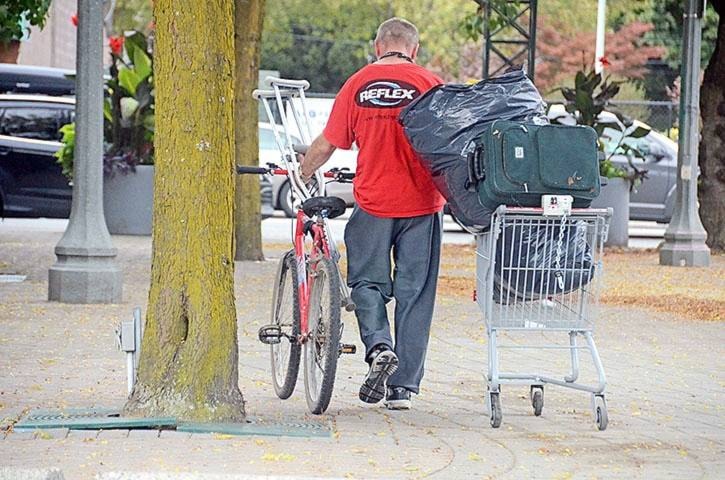Two Saturdays ago, at the request of my daughter, I took her and her brother to the downtown library. My kids love that library: the big stuffed giraffe, the little puppet theatre, the reading bed-car.
My kids picked some books, did a little puppet show, and then we went to one of the reading nooks surrounded by windows. And right outside those window were three men who looked to be just finishing or just starting a little illegal substance use session. One of them looks in the window at us as my seven-year-old looks out and asks, “What are they doing?”
The library: a great place to learn new things.
A Griffin Security guard came along at that moment and gently moved the fellows along. He then came inside and chatted with me, saying how he hated when “they” congregate by the window in the children’s portion of the library. I heartily agreed and, now with me a little annoyed, we went on our way and on with our day.
The increasing sight of mentally ill and/or drug addicted and/or homeless people is causing strife in all corners of the city, from the sympathetic to the enraged.
I never did give my daughter a good answer to her question, but I suppose I should have tried harder. What were they doing? Loitering in the park like so many others, enjoying the sunny weather. Feeding an addiction, killing the pain of childhood trauma, maybe.
Whenever someone talks about the homeless I wonder exactly who it is they are picturing. The caricature in a person’s head says more about them than it does about anyone on the streets. To see those on the streets as one homogeneous group is like saying everyone with a blue shirt or driving a Ford is the same.
Some of us picture a down-on-his-luck old man desperate for a scrap of bread, while others picture the hoodie-wearing young thief riding around on a stolen bike looking for car windows to smash. And everything in between.
As Kishone Roy, CEO of the BC Non-Profit Housing Association put it in a recent Tweet that stuck with me: “I’m increasingly convinced that many people think the ‘visibility’ of homelessness is the biggest issue - not the human suffering.”
I'm increasingly convinced that many people think the "visibility" of homelessness is the biggest issue - not the human suffering. https://t.co/n49iBjObef
— Kishone (@kishoneroy) May 16, 2017
How much of the perceived problem is about the true nature of the problem and how much is about the fact that we can see it? Social media is the place where we see glib and cliché responses such as “ship them all to an island” or “give them a bus ticket back to where they came from” or the much harsher, “give ‘em all fentanyl.”
Housing affordability, mental illness and drug addiction are plaguing B.C., and while many people are truly unreservedly benevolent and sympathetic to those on the streets, many others are callous and glib.
But I suspect many others suffer as I do with the cognitive dissonance that comes with both sympathy and annoyance. I really don’t want to see you stumbling around outside the library window as I’m trying to read to my daughter. At the same time, sheesh, what happened in your life that led you to this spot and this desperate situation?
A woman called me recently to tell me about a man she met, Jarrod, who is diabetic, can’t afford even low-income housing and is stuck on the streets. He’s been in and out of prison so can’t get a job and he wanders around carrying his worldly possessions in a couple of suitcases.
“No one is willing to hire him because of his past,” she told me. “It is heartbreaking to see it.”
Yes, it is, which is I guess why so many of us would just rather not.
@PeeJayAitch
paul.henderson@theprogress.com
Like us on Facebook and follow us on Twitter.
